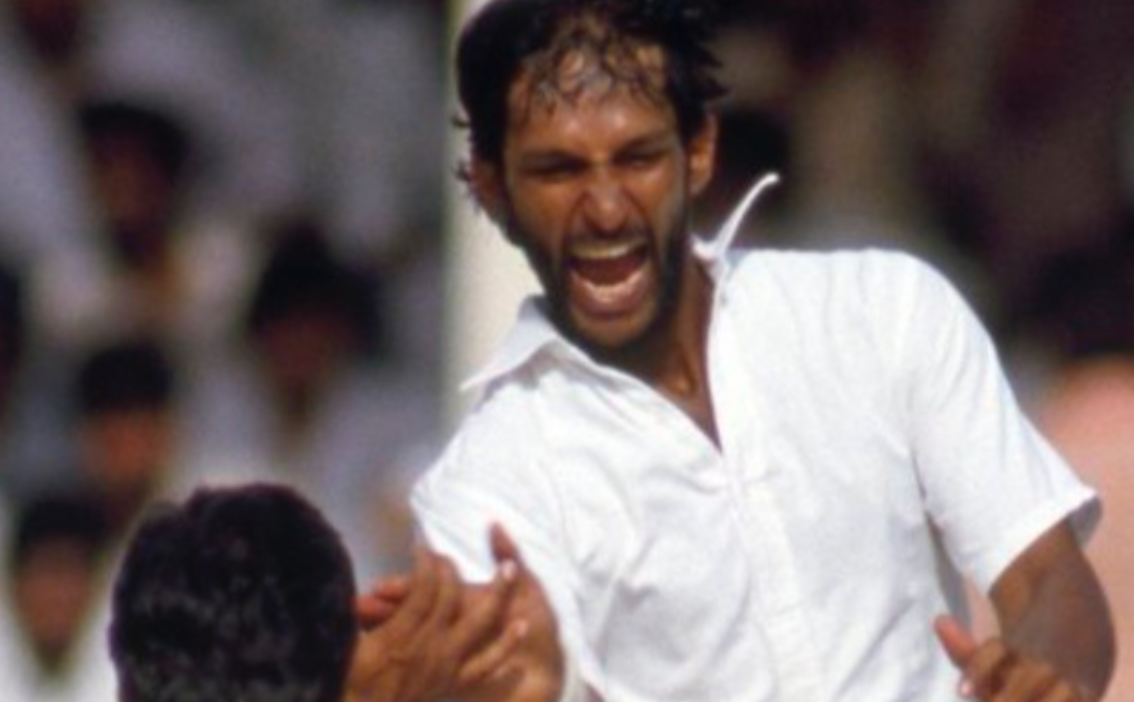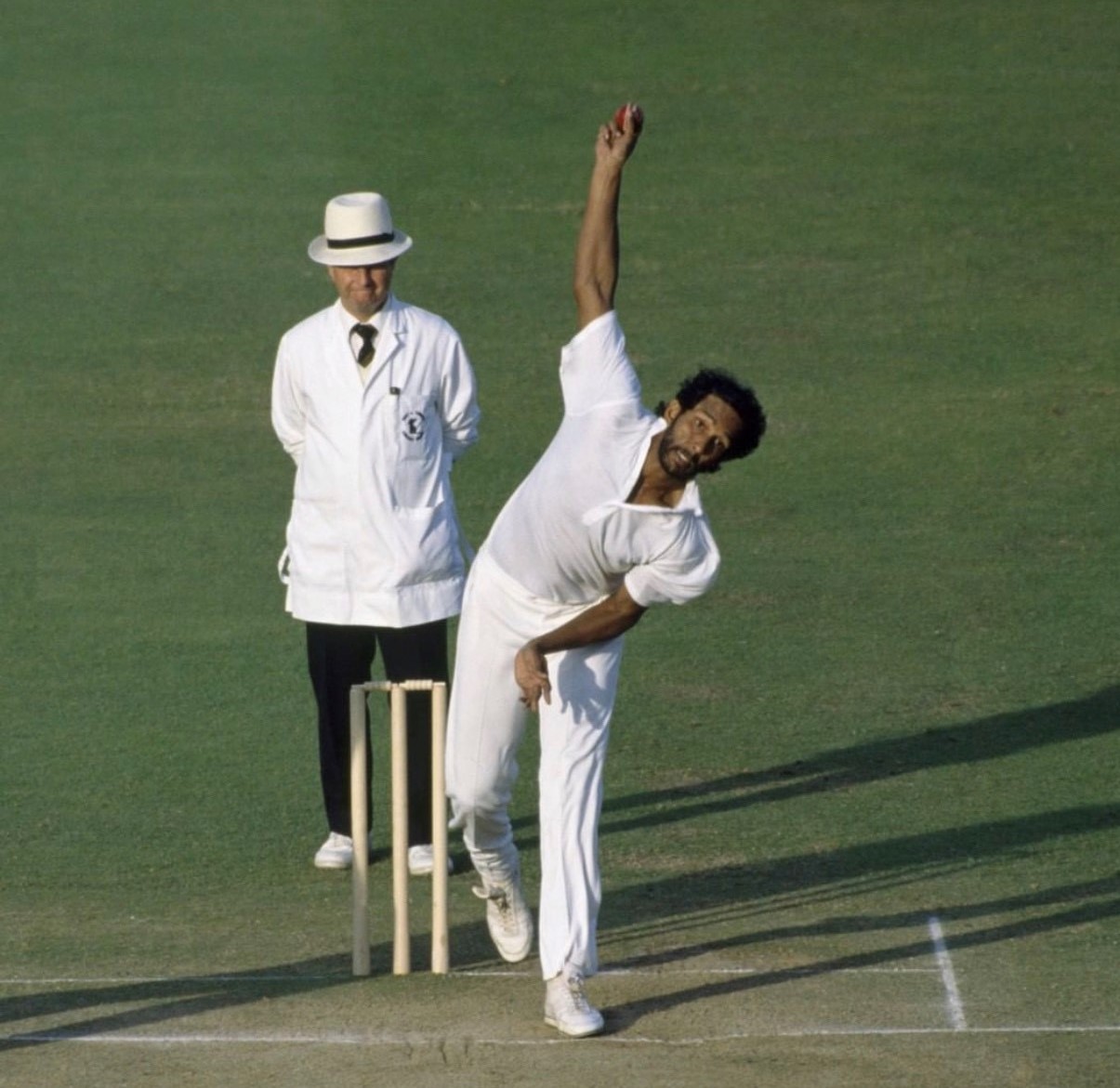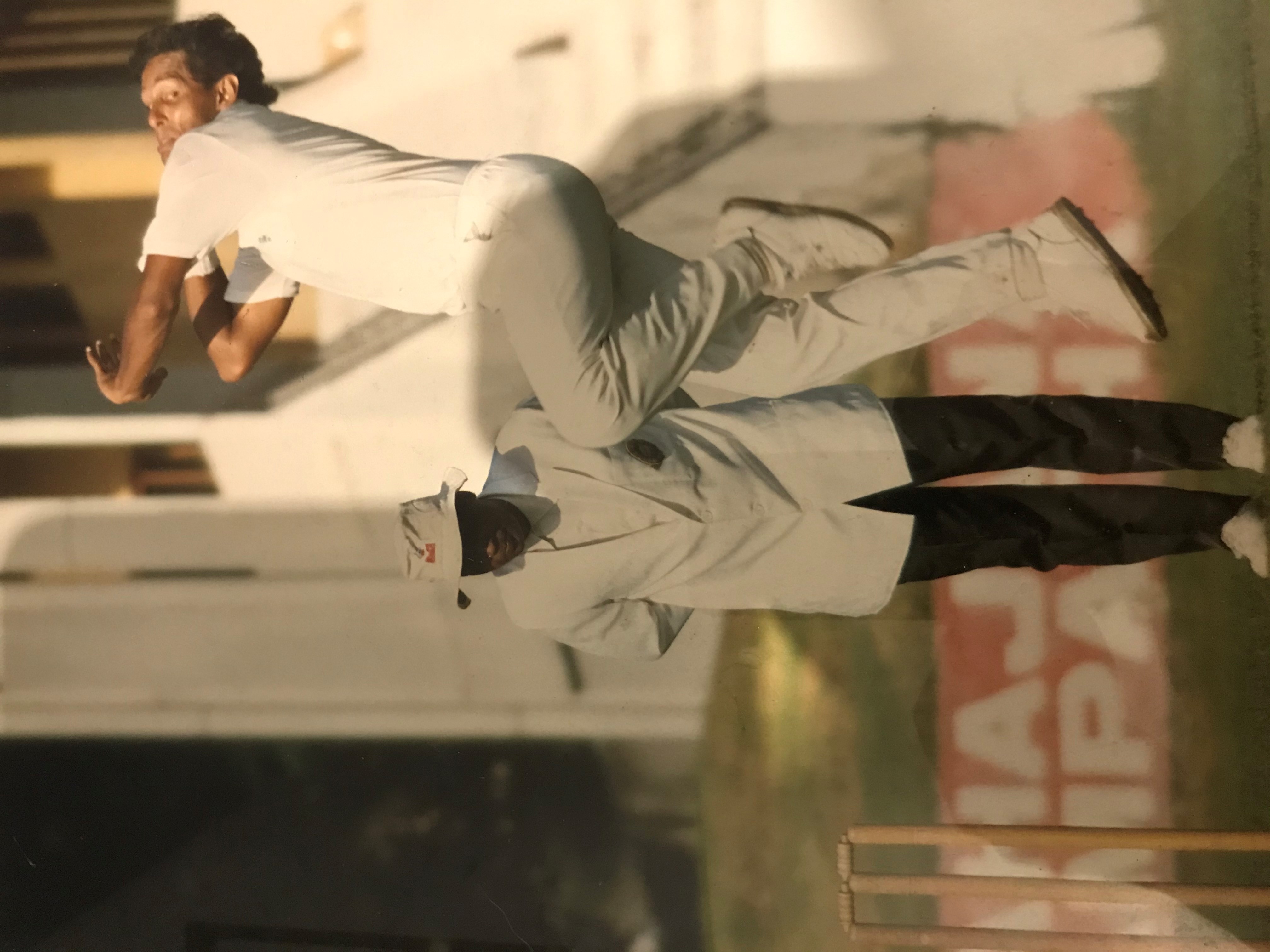Ravi Ratnayeke: The story of Sri Lanka's 12th Test cricketer
Mitch Bourke | May 26, 2024

7-fa, 7-fa, 9-fa, 7-fa.
Not many can stake claim to a form-line as emphatic as Ravi Ratanayeke’s.
For the-then 17-year-old, it was as simple as having “read in the paper that an Australian Under 19 team was touring Sri Lanka… I set my mind on wanting to make the Sri Lanka U19s.”
Four games and 30 wickets later, the product of Kandy’s Trinity College was a lock.
He never looked back, still in school when he started playing first-class cricket, although he conceded “all I knew at the time was how to get the ball and bowl… there was no thought to set up plays, I was happy to get the ball and go for it.”
Believing he “must have shown some promise,” Ratnayeke’s rise through the ranks coincided with Sri Lanka’s rise to becoming a Test-playing nation, which was a “hard road,” but “massive” feat in the country’s rich cricketing history.
“The talent was always there. It was about having the finances and facilities to take the next step.”
Once that step was taken, “cricket became the No 1 game right across the country. It was on TV… and parents started pushing their young kids to play cricket, and those kids could see the best players on TV and aspire to be like them.”
As for the mood around the playing group, “there was genuine excitement that we were finally recognised as a Test nation.”
“We lost lots in the early stages, but always knew we would be competitive. We had talent, but lacked experience, which meant we struggled a lot on the fourth and fifth days of Test matches.”
Even after claiming five scalps in the warm-up game, Ratnayeke missed selection for Sri Lanka’s inaugural Test against England in early 1982, and although “you hope you get picked for a big thing like that’’ he insists “it wasn’t really disappointing.”
“I didn’t fit the makeup of the side, as the selectors went with three spinners… so there were no high expectations.”
Being Sri Lanka’s 12th Test cricketer, Ratnayeke’s Test debut wouldn’t be far off, coming less than a month later against Pakistan in Karachi. “I think you just play the game and then recognise the significance afterwards.”
“Patience is key. You need patience, and you need the strength to grind it out. Early on I lacked that patience and it took me a little while to get going and to be able to grind out both scores and wickets.
“As a bowler you have to bowl six quality balls over after over, if you bowl one or two loose balls every over the game gets away from you, and when you’re batting the bowlers are asking questions all the time.
“It’s the ultimate test. A test of skill, a mental test, it tests your ability to strategise and plan. That’s what Test cricket is all about.”
Still in its Test-playing infancy, Sri Lankan cricket was rocked by a rebel tour to South Africa.
It was forced into a “rebuild”, stunting its short-term growth.
With the benefit of hindsight however, it’s easy for Ratnayeke to see a significant silver-lining.
“In the process of rebuilding, players were bought in a lot earlier than they otherwise would’ve been and gained experience at that level.
“We were set back in the short-term, but benefited in the long-term, as we were forced to invest in younger players. I’d retired, but those players ended up forming a big part of our 1996 World Cup-winning squad.”
The short-term pain was evident in the midst of Sri Lanka’s 1985 tour to Pakistan. It had won one Test from 16 matches.
Undeterred, Ratnayeke ploughed through Pakistan, taking 8-83 – at the time the best Test bowling figures by a Sri Lankan – in the Sialkot Test where “getting wickets was hard work as the pitches weren’t suited to pace.”
“I found my rhythm, and we were up north so it was cooler which helped, everything fell into place. I got on a roll and kept getting wickets.”
Ratnayeke would rank the performance – which has only been bettered by champion tweakers Muttiah Muralitharan and Rangana Herath – as “one of the top (achievements)’’. “It was foreign conditions, and they were a strong side with Imran Khan and three or four of the top players in the world.”
He also rates his 5-42 against New Zealand at Colombo highly. “That was slightly more satisfying on a slow, low wicket not conducive to medium-quicks. They were both great achievements,’’ he said.

Ratanayeke sends one down at Lords
Great achievements weren’t limited to individual performances for Ratnayeke, who represented Sri Lanka at the “eye-opening” 1987 Cricket World Cup.
“Having missed being part of the team for the 1983 World Cup, I was desperate to make a World Cup squad at least once. Being picked for the 1987 World Cup was a dream come true and I was very much looking forward to it and playing a part.
“Being there with all the best cricketing nations and the very best players in the one place just opened my eyes and made me realise that I was competing with the very best cricketers in the world. As much I was looking forward to the challenge being a part of the World Cup of cricket meant something very special which is difficult to describe.
“Sri Lanka as a team did not do particularly well, though we competed well in short bursts, which was simply not good enough. It certainly showed us that we needed to make a big improvement to mix it with the best on a consistent basis.
“From that standpoint Sri Lanka certainly learnt and commenced a period of blooding younger players in the late 80s like Aravinda De Silva, Sanath Jayasuriya, Roshan Mahanama and Asanka Gurusinha. That, I believe, helped Sri Lanka build into a formidable cricketing team coming into force in the early and mid-nineties.”
One of Sri Lanka’s toughest days of the tournament came at the hands of a ruthless Viv Richards and his West Indies, with Richards plundering 181 off 125 balls.
The day started brightly for Ratnayeke, “with two wickets very early, I was probably 2-20 when I finished my first spell of six overs’’.
“We had them on the ropes when Viv came out with Gus Logie, but they started to get a partnership going,” he said.
“Around the 38th over Viv hit an uppish drive to our captain twice in a row off my bowling partner Vinothen John, and he dropped it twice.
“Viv smashed it from there, he was hitting the ball that hard I wanted a helmet when I bowled. I think I went from 2-20 to 2-60 in the next two overs.”
Throughout the World Cup, much like his career, Ratnayeke’s position in the batting order varied drastically. Having batted as low as eight, as well as in the top three, Ratnayeke theorises “I wasn’t a quick scorer… but I could hang around and I preferred to play the fast bowlers.”
“When we played the West Indies in 50-over games I opened the batting on quite a few occasions to see off the new ball.”
A member of the World XI squad for the Marylebone Cricket Club (MCC) Bicentenary Test, Ratnayeke would draw heavily on those experiences of staving off the Windies new-ball attack in a warm-up game turned fight for survival.
Lancashire spearhead Patrick Patterson “was a young quick trying to break into the West Indies team” and bowling “absolute smoke.”
“Clive Lloyd was the World XI manager and he was a West Indies selector at that time, Patterson was obviously trying to impress him and put his name forward.”
As the tale goes, World XI captain Allan Border wasn’t keen on facing Patterson’s thunderbolts, so Ratnayeke was delegated the undesirable task and sent in at No 3.
“Sunil Gavaskar got hit in the leg and retired hurt, he got off the ground and said, ‘I’m not going back out there’. I had to go out at No 3 and I didn’t see the first ball. At the end of the over Desmond Haynes (who was at the other end) came up to me and said, ‘I’m getting out of here’,” recalled Ratnayeke.
“Their keeper was standing an extra 20 yards back and taking the ball above his head, it was thumping into the gloves… it was the quickest bowling I’ve ever faced.”
Unfortunately the bravery Ratnayeke displayed in that game wasn’t enough to earn a place in the showpiece event, a “very competitive and high quality five-day Test.”

Ratnayeke in his delivery stride
As was commonplace for many Sri Lankan cricketers of the 1980’s, Ratnayeke’s career ended prematurely, but not before Arjuna Ranatunga’s deputy was given a “brilliant” opportunity to captain his nation in an ODI against Bangladesh.
“One game, one win, 100% record,” joked Ratnayeke, “the captain was injured so I got the call up.”
Having pulled the pin on his international career at just 30 years of age, Rantayeke puts it plainly, “I had an Australia residency, and had to make use of it. We had young boys, and decided it was a good time to make the move, so that put an end to my cricket.”
Originally stationed in Perth, Ratnayeke became involved in the Premier system playing for Mt Lawley, but “struggled playing the same game over two Saturdays.”
“I spoke to Chris Matthews, who I met in England, about coming out to play in Australia. He rang the club for me and got me over there. The cricket was quality, very good… (but) it was very difficult to get that match rhythm. I spent lots of time training rather than playing.”
Fortunately the experience put Ratnayeke in good stead when he made the move to Melbourne and the Victorian Sub-District Cricket Association (Subbies), “it was easier to mentally adjust in Melbourne because I’d already experienced the two Saturdays in Perth.”
“I knew cricket would be difficult because I couldn’t be professional. I was finished with Test cricket and moving on to the next phase of my life. I started working, spent six or seven years studying at uni. I decided there was no point playing Premier cricket because I wasn’t going to play first-class cricket. I could enjoy myself and earn reasonable money (in Subbies), without having to devote a lot of time to training like in Premier cricket.”
Beginning at Preston, Ratnayeke lasted until the 1995/96 season where he did his knee and took a year off, returning the following season with Moorabbin where he played until the early 2000s.
Ratnayeke enjoyed the fact that “it was a good competition with good cricketers. There were a few former Test players when I was playing, Gary Cosier and Ian Callen. There were a few former Vic state players, a few Premier players.”
Also lauding the flexibility and work-life balance Subbies provided, “people were starting to find they had to work, and Subbies became a good in between for Premier cricketers to allow time for work and family. As a result the standard picked up.”
Although he “didn’t really enjoy” coaching, Ratnayeke “did a little bit of individual stuff here and there, some work with fast bowlers in the Premier sides. It wasn’t invigorating… I’d rather spend my time playing golf, but if someone asked for help I’d always make time for them.”
Instead choosing to devote his time post-cricket to AMCOR, “who manufacture packaging, I’ve been there for about 20 years now. I’m apart of the sales team, but hopefully I’ll finish off soon and go into the sunset. It’s been a good business for me.”
Looking back on his time in a “bubble where you think the whole world’s against you,” Ratnayeke enjoyed “the fact that you played at the highest level, and could form friendships and relationships as a result.”
But laments his young retirement, if he could change one thing, “I wouldn’t give the game away as early as I did, I had a good two or three years left and they were my peak years.”
When quizzed on his proudest moment as a cricketer, as was a common theme, Ratnayeke kept it simple: “Just representing Sri Lanka.”
That was until the memories came flooding back, “playing at Lord’s, playing Test cricket against the best in the world. There was my 8-83. I made a 90-odd in India in the Test at Kanpur and also took 4 for about 90 in the same game. A Test win against Pakistan in Sri Lanka where I took five wickets in the second innings to help set up the match stands out. There was an against the odds win in a 50 over international against a powerful West Indies side, the number one team through the eighties, all our plans came off and we rolled them for 160.”







